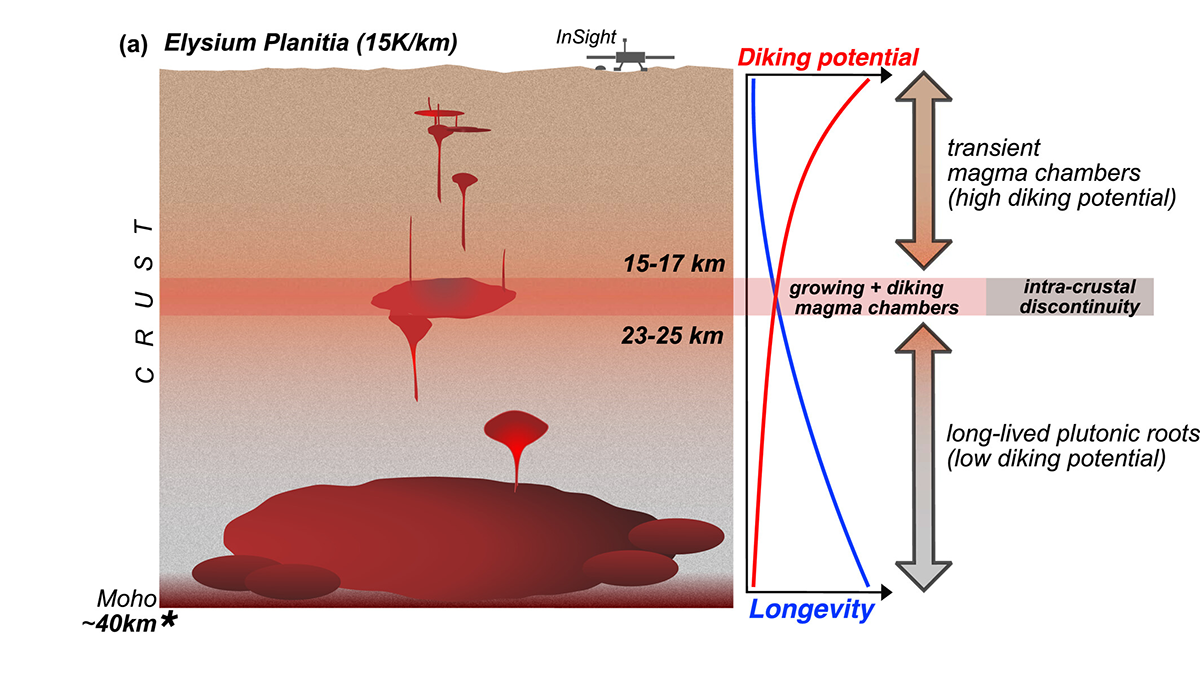Editors’ Highlights are summaries of recent papers by AGU’s journal editors.
Source: Journal of Geophysical Research: Planets
The longer a magma chamber resides in the upper crust, the more likely it will evolve to silica-rich compositions. Volcanism has been active on Mars throughout its history, but there is an apparent lack of widespread evolved magmatism, and the development of magma storage systems has been poorly constrained.
To better understand how crustal depth and temperature profile affect the evolution and growth of magma chambers on Mars, Chatterjee et al. [2025] utilize numerical modeling and compare with recent results from the InSight lander mission. Their models suggest that Mars’ crust is divided into three zones that are consistent with InSight seismic data: (1) the upper crust where small intrusions, such as dikes, dominate the upper crust; (2) the lower crust where larger magma chambers can develop and grow; and (3) a middle zone where magma chambers can occasionally grow and produce dikes that erupt at the surface.
The depths where the three magma storage zones are located depend on the crust’s temperature gradient and this study is the first to model the longevity of magma chambers on Mars as it has gradually cooled over geological time. A higher temperature gradient during Mars’ early history (the Noachian and Hesperian time periods) would have allowed larger, more long-lived upper crustal chambers to develop with the potential to feed eruptions at the surface. Seismic activity in Cerberus Fossae detected by InSight is consistent with magmatism and suggests its continued influence on the structure and make-up of the crust of Mars.
Citation: Chatterjee, A. P., Huber, C., Head, J. W., III, & Bachmann, O. (2025). Magma chamber longevity on Mars and its controls on crustal structure and composition. Journal of Geophysical Research: Planets, 130, e2024JE008798. https://doi.org/10.1029/2024JE008798
—Mariek E. Schmidt, Associate Editor, JGR: Planets

